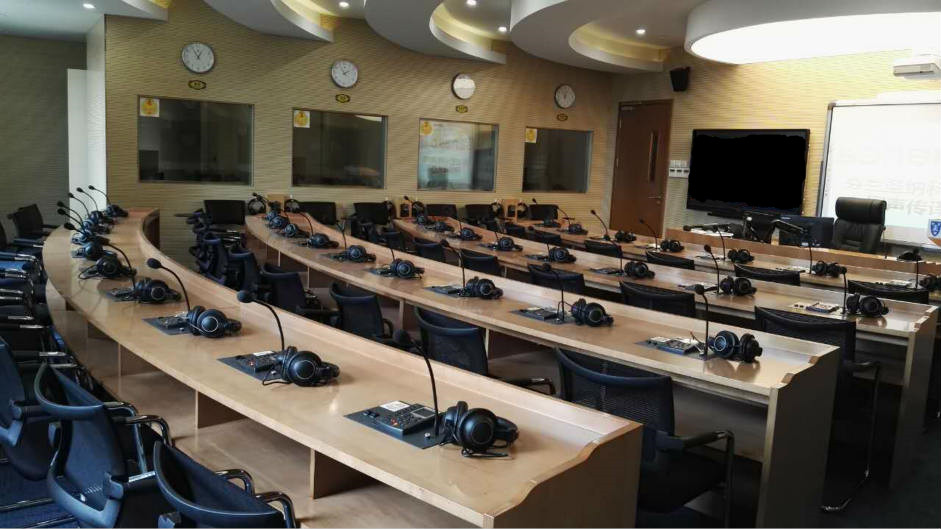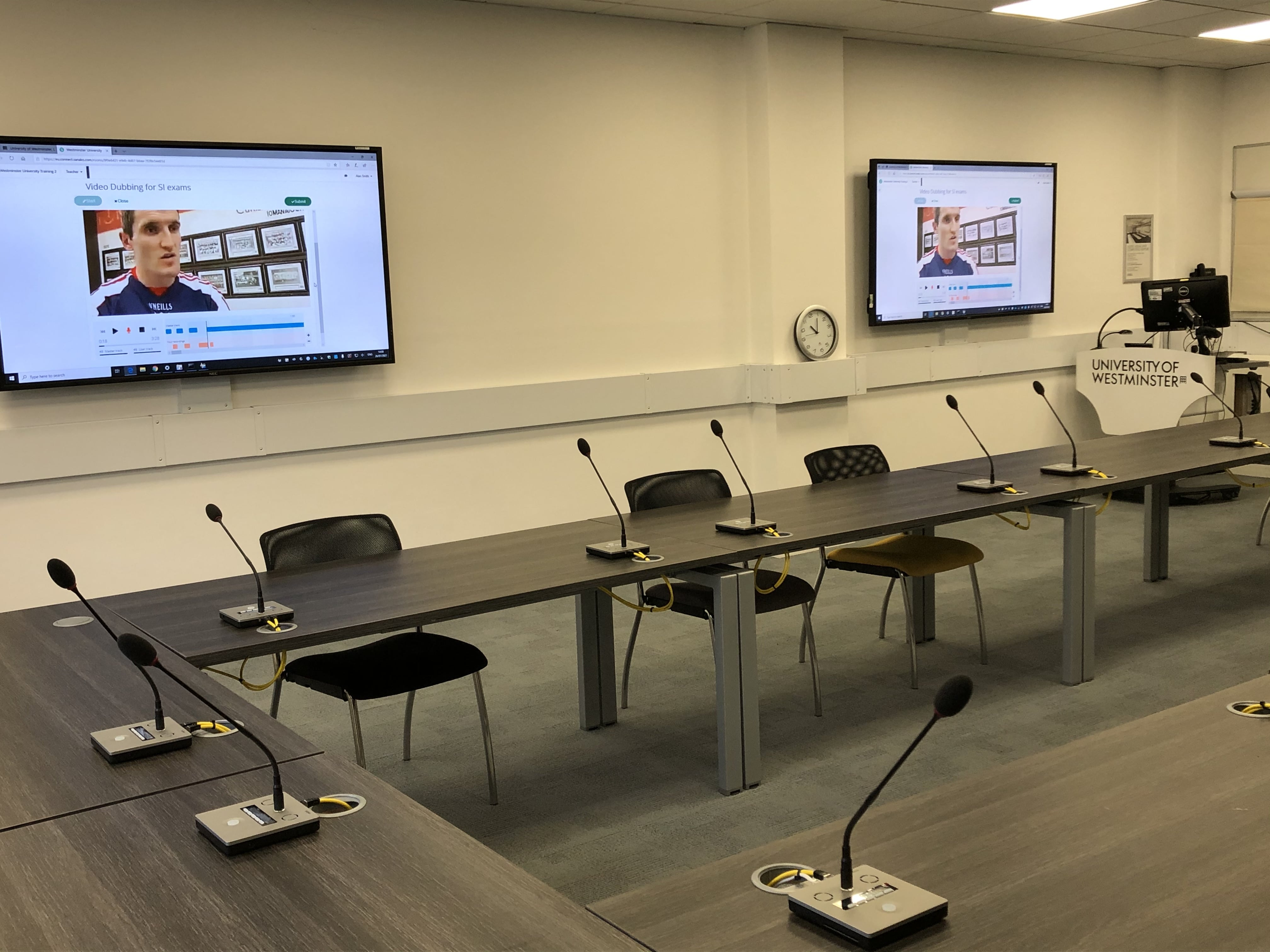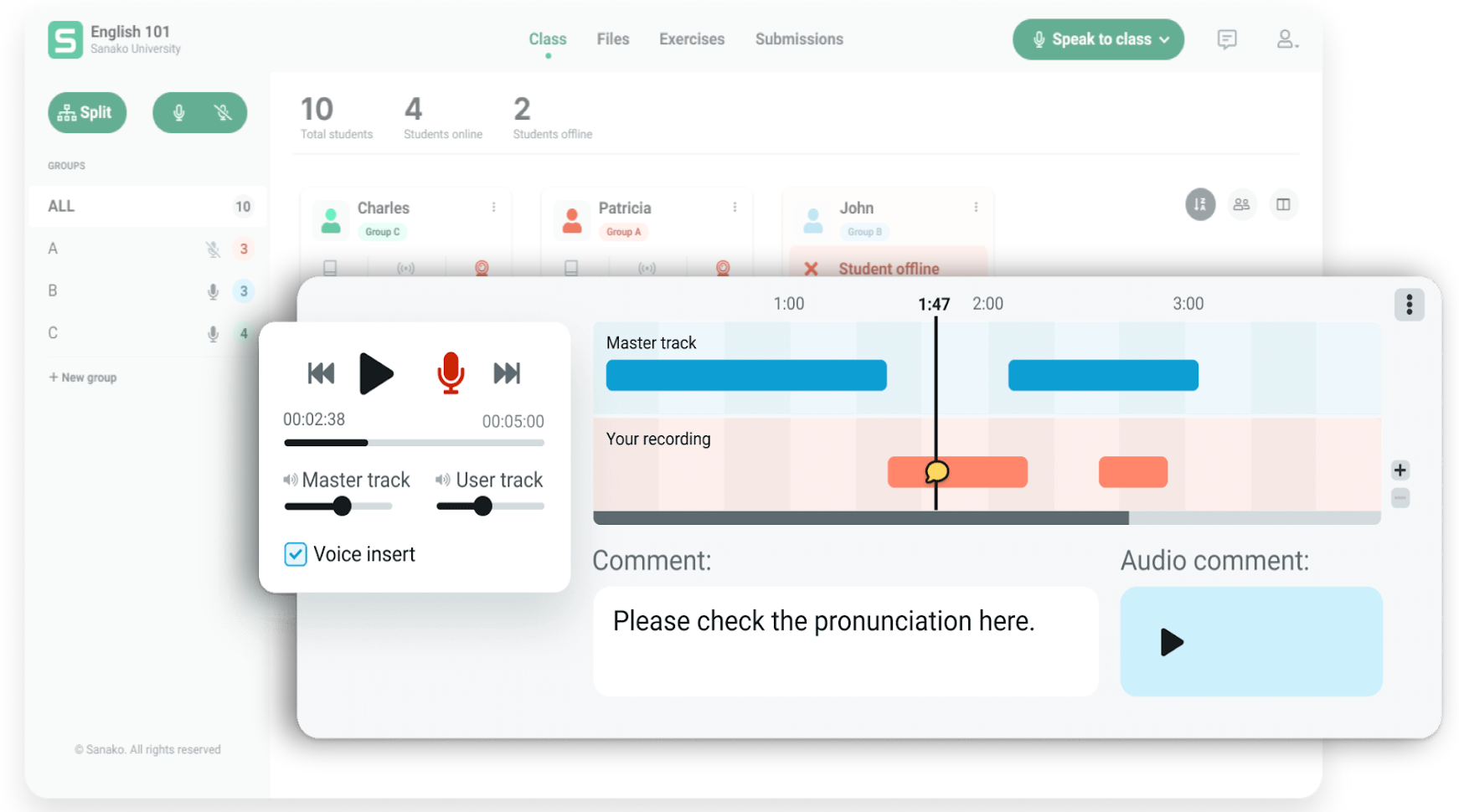One of the most popular motivations for learning a language is to be able to communicate with people of a different culture and nationality to your own. For most learners, this usually means being able to order a meal or hold a conversation when travelling, but for a professional interpreter, this is at the heart of their work every single day. So, how are the best universities today training interpreters and which teaching approaches do they use?
The job of an interpreter is to be a real-time mediator for people who communicate in different languages. With outstanding skills in at least two languages, interpreters make it possible for different people to have a voice and to be heard. They take what is being said and convert it from one language into another. As well as the words themselves, they must also accurately interpret intention and nuance to communicate exactly what one person is trying to say to another.
The role of the interpreter is changing to meet the demands of the digital, globalized workplace. This blog post examines the two main types of interpretation – consecutive interpretation and simultaneous interpretation. It also studies how leading universities and postgraduate courses are changing to create blended learning environments that meet the needs of both students and teachers.
What is consecutive interpretation?
Consecutive interpreters listen to what one speaker is saying and then convey the message to their audience in another language. Typically, the speaker will pause every so often to allow the interpreter to then translate what was said from the source language into the audience’s language.
This form of interpretation therefore works best for small gatherings or for one-on-one meetings where the conversation provides natural pauses for the interpretation. In the latter scenario, the interpreter will communicate consecutively with both participants, interpreting one person’s message and then the other person’s message and so on.
Whether online or face-to-face, consecutive interpreting remains the most common choice for international business meetings / negotiations, interviews, legal conversations and medical consultations. In fact, it’s usually used in any situation where clarity, detail and intention are more important than the sheer speed of communication.
What is simultaneous interpretation?
As the word ‘simultaneous’ suggests, simultaneous interpreting is listening to what is being said in one language and concurrently saying it in another language.
However the reality is slightly different. The interpreter cannot accurately begin to translate until they have heard the verb, the subject and the sentence’s overall meaning. By that time they are also already listening to the next sentence and preparing to translate that!
Simultaneous interpreting is highly effective when the main speaker is in front of an audience – we’re all familiar with scenes from the United Nations (UN) where delegates listen to the speeches via a simultaneous interpreter in their earpiece. It’s widely used for conferences, lectures and presentations – demand has continued to rise as these events are increasingly also delivered online.
In any setting, the speaker speaks into a microphone and the interpreter transfers their words to the delegates in a common language, which is usually English. At international events, multiple interpreters may be required to ensure that all of the delegates’ native languages, from Swahili to Swedish, are fully accommodated.
How do universities train interpreters for the job?
Interpreters specialising in both of the forms outlined above are usually expected to have a postgraduate or Masters qualification in interpreting. These are widely available in universities across the world – they require a good first degree and students will need to pass a range of language tasks in their chosen language(s).
The best university courses tend to be included in the AIIC Interpreting Schools & Programmes Directory. Look out for those courses that incorporate the best practices recommended by AIIC (the International Association of Conference Interpreters). And prioritise those institutions that are members of the CIUTI (Conférence internationale permanente d’instituts universitaires de traducteurs et interprètes) or who have close relationships with significant employers of interpreters such as European Parliament, the European Commission and the UN.
A good postgraduate interpreting course should seek to develop the essential skills of the job – interpreting, analysis, listening and note-taking. They will also provide significant, practical experience of both types of interpretation. Importantly, universities are rapidly upgrading their educational technology to help students gain these key skills and to prepare them for work in the language services industry.
Picture from China’s most advanced simultaneous interpreting lab at XJTLU (Xi’an Jiaotong-Liverpool University). This Interpreting Training Lab is provided by Sanako.
Supporting a blended learning approach
One of the key impacts of the Covid-19 pandemic in higher education has been that universities and students are now increasingly looking for a more flexible approach to teaching and learning. These so-called blended learning or hybrid learning models combine face-to-face time in class with flexible online work which can be conducted at the time and place of the student’s choosing. Evidently, such a move has seen (and will continue to see) institutions moving away from traditional, hardware-based language lab interpreting facilities to better support hybrid learning through increasingly digital online solutions. After all, this solution also better reflects the wide variety of working scenarios interpreters will find themselves in.
Sanako is already working with many leading universities across the globe, particularly in the UK, to support this shift to blended learning. Sanako’s market-leading Conference Interpreter Training Systems are used for example in University of Leeds and University of Westminster. Sanako can deliver HYBRID, SOFTWARE-ONLY and ONLINE interpreting training solutions to institutions.
HYBRID
The University of Westminster provides a compelling case study of how to update their conference interpreting technology to support a clear commitment to blended learning approaches. In 2021, the University moved to a hybrid solution combining hardware, software and online elements to better support educators and learners and to give students experience of working in a realistic interpreting environment.
Students can now use:
- Two large professional interpreting suites, each fitted with soundproof booths, laptops and microphones
- A software-only conference interpreting facility
- An online facility for simultaneous and consecutive interpreting
Working with hardware partners, Sanako Connect and Sanako Study products now provide a future-proof and long-term solution for the University of Westminster’s staff and students.
This is one of the professional interpreting suites at University of Westminster.
SOFTWARE-ONLY
As referenced above, software-only solutions can quickly transform any location across campus into an interpreting facility. Students and educators simply log on to the university network with their laptop or tablet to access or submit the work required.
Importantly, there’s no compromise on performance either. Software-only solutions offer the full functionality required to train consecutive / simultaneous interpreting in any location. At the University of East Anglia in UK, for example, students can easily interpret live to an in-person group or remotely to an online audience. The Sanako Study system captures audio files from any number of individual, participating students and enables the educator to provide individual or group feedback at any stage.
For full details of how the University of East Anglia transformed their interpreting training approach, read the full case study here.
Sanako Connect’s advanced two-track recorded helps teachers to provide time-coded feedback into students’ audio responses.
ONLINE
To maximise accessibility to learning, Sanako Connect can be easily included in both of the above settings to enable students to continue their studies online. All recordings can be recorded live and accessed at any stage by student / teacher. Connect’s advanced two-track recorder is perfect for interpreter training, allowing students to insert their response after hearing the master audio file. Additionally the teacher can provide feedback by inserting their own comments into the students actual recording at any point.
Watch the below tutorial video to learn more how to create and share consecutive and simultaneous interpreting activities with your students using Sanako Connect.

Contact us now to find out how Sanako’s range of conference interpreter training systems and general language teaching solutions can support your institution’s shift to blended learning.
Book free demo


